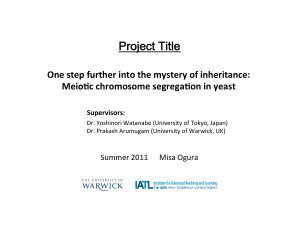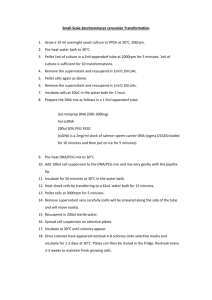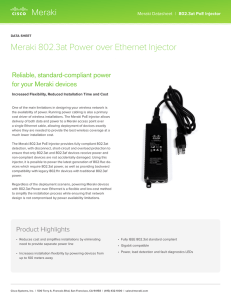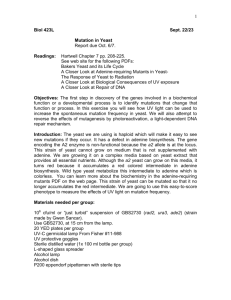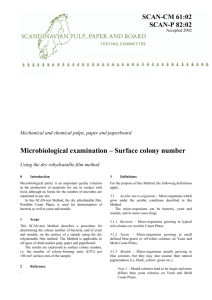Protocol
advertisement
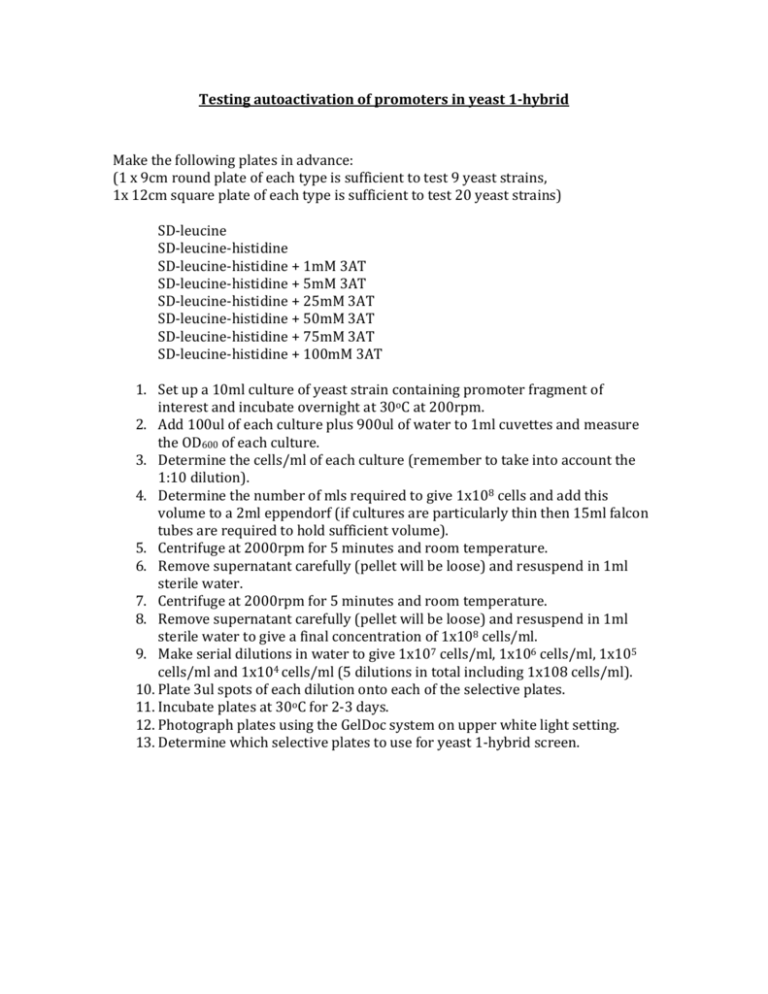
Testing autoactivation of promoters in yeast 1-hybrid Make the following plates in advance: (1 x 9cm round plate of each type is sufficient to test 9 yeast strains, 1x 12cm square plate of each type is sufficient to test 20 yeast strains) SD-leucine SD-leucine-histidine SD-leucine-histidine + 1mM 3AT SD-leucine-histidine + 5mM 3AT SD-leucine-histidine + 25mM 3AT SD-leucine-histidine + 50mM 3AT SD-leucine-histidine + 75mM 3AT SD-leucine-histidine + 100mM 3AT 1. Set up a 10ml culture of yeast strain containing promoter fragment of interest and incubate overnight at 30oC at 200rpm. 2. Add 100ul of each culture plus 900ul of water to 1ml cuvettes and measure the OD600 of each culture. 3. Determine the cells/ml of each culture (remember to take into account the 1:10 dilution). 4. Determine the number of mls required to give 1x108 cells and add this volume to a 2ml eppendorf (if cultures are particularly thin then 15ml falcon tubes are required to hold sufficient volume). 5. Centrifuge at 2000rpm for 5 minutes and room temperature. 6. Remove supernatant carefully (pellet will be loose) and resuspend in 1ml sterile water. 7. Centrifuge at 2000rpm for 5 minutes and room temperature. 8. Remove supernatant carefully (pellet will be loose) and resuspend in 1ml sterile water to give a final concentration of 1x108 cells/ml. 9. Make serial dilutions in water to give 1x107 cells/ml, 1x106 cells/ml, 1x105 cells/ml and 1x104 cells/ml (5 dilutions in total including 1x108 cells/ml). 10. Plate 3ul spots of each dilution onto each of the selective plates. 11. Incubate plates at 30oC for 2-3 days. 12. Photograph plates using the GelDoc system on upper white light setting. 13. Determine which selective plates to use for yeast 1-hybrid screen.
